Xinyue Xiong
Quantifying Uncertainty in Deep Spatiotemporal Forecasting
May 25, 2021
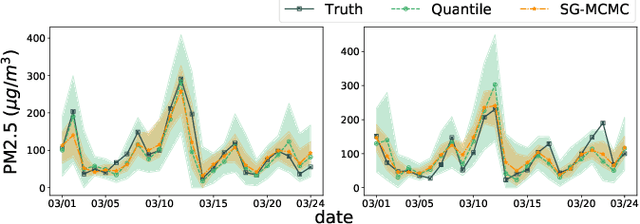
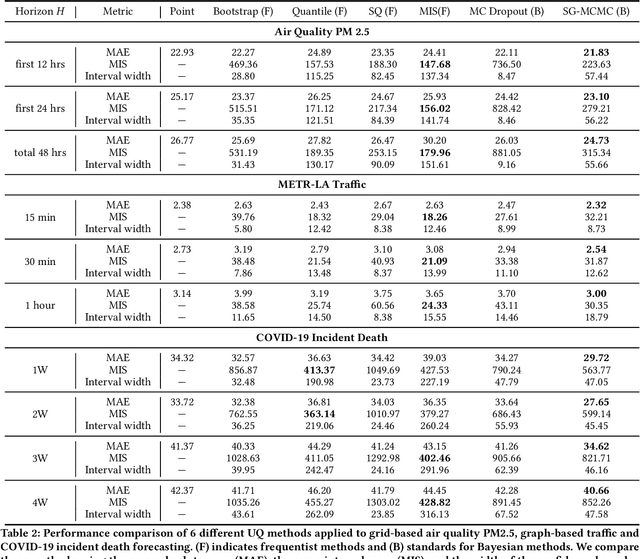
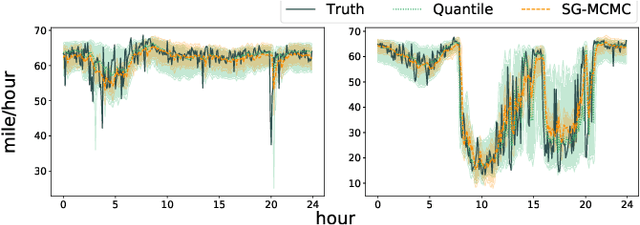
Abstract:Deep learning is gaining increasing popularity for spatiotemporal forecasting. However, prior works have mostly focused on point estimates without quantifying the uncertainty of the predictions. In high stakes domains, being able to generate probabilistic forecasts with confidence intervals is critical to risk assessment and decision making. Hence, a systematic study of uncertainty quantification (UQ) methods for spatiotemporal forecasting is missing in the community. In this paper, we describe two types of spatiotemporal forecasting problems: regular grid-based and graph-based. Then we analyze UQ methods from both the Bayesian and the frequentist point of view, casting in a unified framework via statistical decision theory. Through extensive experiments on real-world road network traffic, epidemics, and air quality forecasting tasks, we reveal the statistical and computational trade-offs for different UQ methods: Bayesian methods are typically more robust in mean prediction, while confidence levels obtained from frequentist methods provide more extensive coverage over data variations. Computationally, quantile regression type methods are cheaper for a single confidence interval but require re-training for different intervals. Sampling based methods generate samples that can form multiple confidence intervals, albeit at a higher computational cost.
DeepGLEAM: a hybrid mechanistic and deep learning model for COVID-19 forecasting
Feb 15, 2021

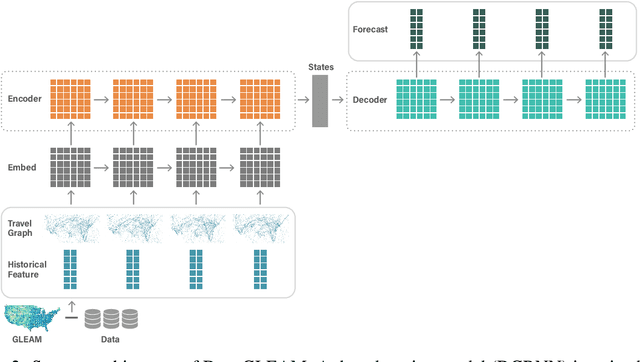
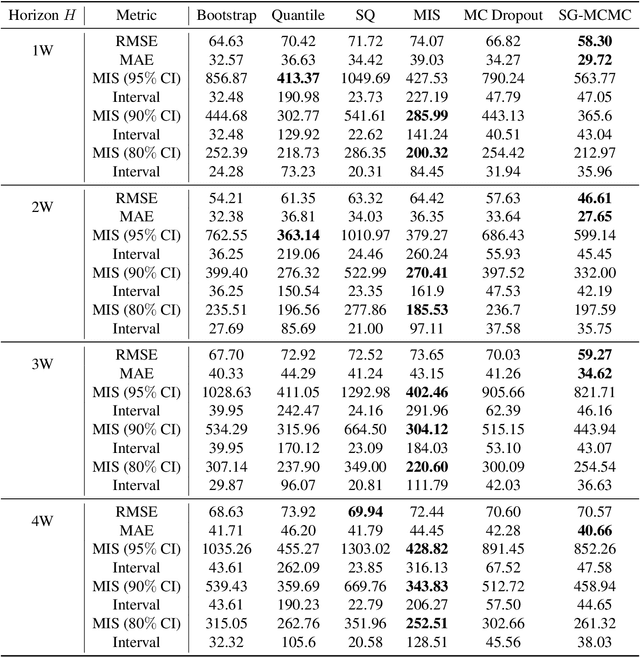
Abstract:We introduce DeepGLEAM, a hybrid model for COVID-19 forecasting. DeepGLEAM combines a mechanistic stochastic simulation model GLEAM with deep learning. It uses deep learning to learn the correction terms from GLEAM, which leads to improved performance. We further integrate various uncertainty quantification methods to generate confidence intervals. We demonstrate DeepGLEAM on real-world COVID-19 mortality forecasting tasks.
Predicting seasonal influenza using supermarket retail records
Dec 17, 2020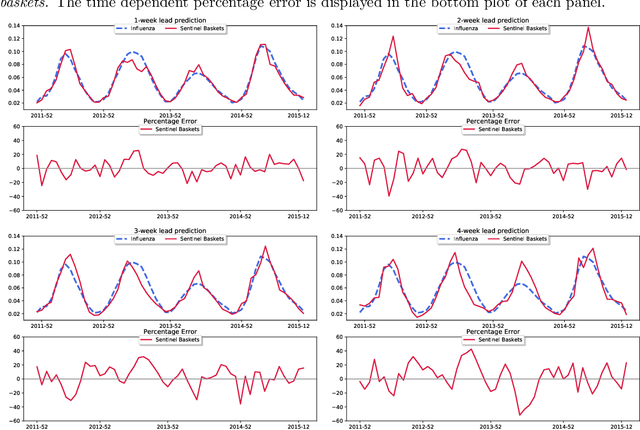


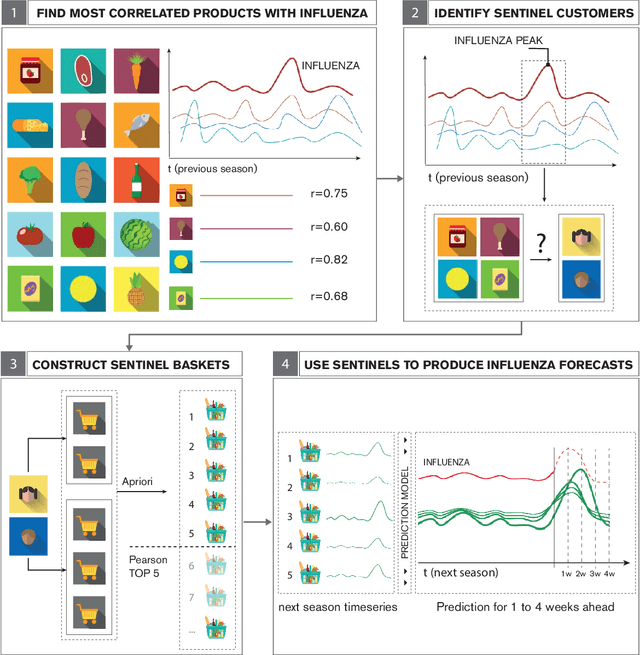
Abstract:Increased availability of epidemiological data, novel digital data streams, and the rise of powerful machine learning approaches have generated a surge of research activity on real-time epidemic forecast systems. In this paper, we propose the use of a novel data source, namely retail market data to improve seasonal influenza forecasting. Specifically, we consider supermarket retail data as a proxy signal for influenza, through the identification of sentinel baskets, i.e., products bought together by a population of selected customers. We develop a nowcasting and forecasting framework that provides estimates for influenza incidence in Italy up to 4 weeks ahead. We make use of the Support Vector Regression (SVR) model to produce the predictions of seasonal flu incidence. Our predictions outperform both a baseline autoregressive model and a second baseline based on product purchases. The results show quantitatively the value of incorporating retail market data in forecasting models, acting as a proxy that can be used for the real-time analysis of epidemics.
 Add to Chrome
Add to Chrome Add to Firefox
Add to Firefox Add to Edge
Add to Edge